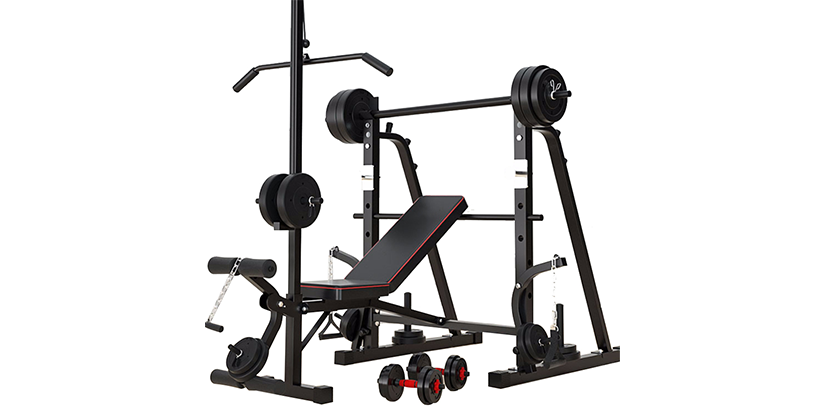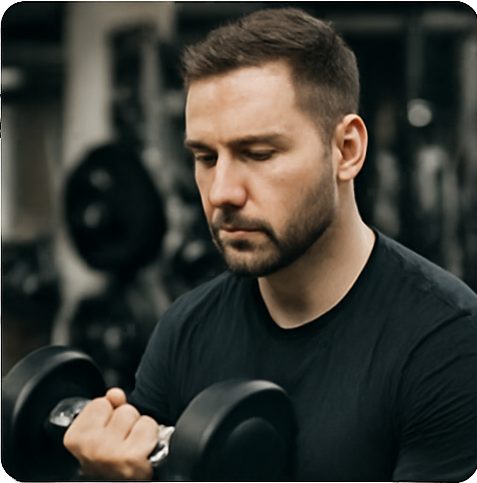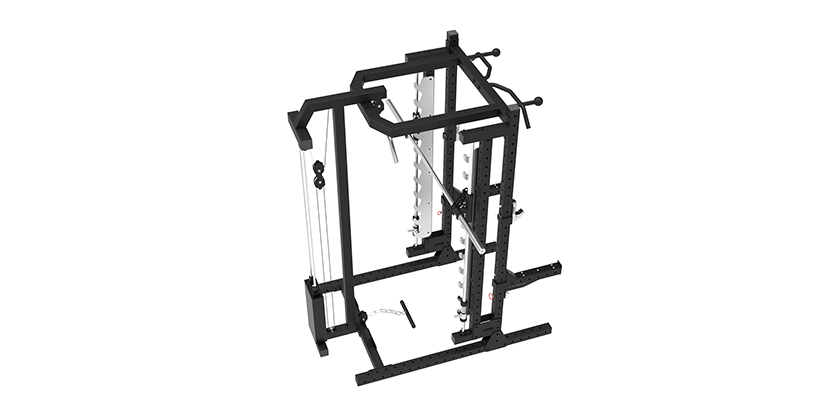When I first started looking into training setups, I kept running into one big question — should I go with an Olympic weight bench with squat rack, or get each piece on its own? I didn’t want to waste money or end up with gear that couldn’t handle real training. So I tested both setups in commercial gyms and talked to a few serious lifters. Here’s what I learned and what I’d recommend if you’re on the fence.
Why the All-in-One Bench + Rack Looked Good at First
Honestly, the Olympic weight bench with squat rack combo looked super convenient at first. It kinda felt like the easy answer. I mean:
- It saves floor space — one setup instead of two
- The price is usually better than buying them separately
- The bench and rack are made to fit together — no need to fiddle with positioning
I figured, “Why complicate it?” It looked official enough, and the word Olympic made it sound like it could handle serious weight.
But yeah… after taking a closer look (and trying a few at different gyms), the little flaws started showing. Some were just annoying — others were straight-up deal-breakers.

What Changed After Actually Using the Combo Rigs
At first, the combo setup looked solid. But after using a few of them in different commercial gyms, I started noticing all the little things that didn’t sit right.
- Most of them were too narrow, especially for wider squat stances
- The bench is fixed, so it just sits there — even when I’m trying to squat
- Adjustability? Not great. A lot of them don’t line up right for both bench and squat
- And some didn’t feel sturdy when I loaded up heavier plates — not exactly confidence-boosting
I didn’t realize how cramped they’d feel until I actually trained on one. With the bar on my back and trying to back out of the rack? Way more awkward than I expected.
On the flip side, when I used a separate bench and rack setup at other gyms, it just felt better.
- I could move the bench or take it out completely
- The squat rack had more room, better J-hook positioning, and better spotting options
- And I could switch easily between squat, bench, overhead press — no weird angles or setups
That’s when it clicked for me: the combo was built for convenience, not performance. And if you’re lifting regularly — or training others — that trade-off starts to matter.
What I Ended Up Buying And Why
After testing both setups and thinking long-term, I decided to go with a flat Olympic bench and a separate squat stand. Yeah, it cost a little more — but honestly, it was worth it.
- I can adjust the rack height for bench, squat, overhead — whatever I need
- I can slide the bench out of the way when it’s time to squat
- Everything feels more solid, like the gear you’d find in a real commercial gym
No wobble. No cramped setups. Just simple, flexible, heavy-duty gear that works. If you’re training hard and plan to keep progressing, this kind of setup just makes more sense.
FAQs about Olympic Weight Bench with Squat Rack
You can definitely use a squat rack for bench pressing, as long as it’s adjustable and stable.
Just slide a flat or adjustable bench underneath, line up the J-hooks to the right height, and you’re good to go. Many commercial squat racks offer versatility by design. Just make sure the rack allows safe bar placement for unracking and reracking during bench press. If the uprights are too tall or too narrow, it could get awkward. But overall, a quality squat rack can easily double for both squats and bench work.
An Olympic squat rack is a piece of strength training equipment designed to accommodate Olympic-sized barbells and weight plates, which are typically 7 feet long and have a 2-inch diameter. These squat racks provide durability and stability, letting you lift heavy weights safely.Olympic squat racks usually include adjustable barbell hook heights, so you can do squats, bench presses, and other lifts at your preferred height. Many Olympic squat racks come with additional features such as safety bars, spotter arms, and weight plate storage, making them more versatile and functional for a variety of workouts. Lifters often use them in commercial gym setups because they support high weight capacities.. The main advantage of an Olympic squat rack is its ability to support Olympic-sized equipment, making it ideal for serious lifters who regularly perform heavy lifts.
An Olympic weight bench supports Olympic barbells (7 feet long, 2-inch sleeves) and is built for heavy-duty lifting. These benches are typically wider, more stable, and built to handle heavier loads than standard home gym benches. They often come with integrated bar holders, safety catches, and may be part of a combo setup that includes a squat rack. In commercial gym settings, Olympic benches are the standard for bench pressing because they support full-sized plates, serious weight, and proper lifting posture. Manufacturers build them for serious training — not just light workouts.
The weight capacity of a squat rack depends on its design and build quality. Most high-grade squat racks in commercial gyms support anywhere from 600 to 1,500+ lbs. Heavy-duty power racks can go even higher. Lighter-duty or budget racks might top out around 300–500 lbs, which isn’t ideal for serious lifting. When choosing a rack, always check the manufacturer’s specs. And don’t forget — it’s not just about holding the bar. The rack needs to stay stable during racking, unracking, and failed reps too. Better to overbuild than risk a collapse.

Hi, I’m the editor here at Leadman Fitness. We’re a manufacturer focused on producing top-quality barbells, plates, kettlebells, dumbbells, and strength training gear. I’ve been into sports and fitness for years, and I know my way around all kinds of gym equipment—both from using it and helping create it.
I spend a lot of time understanding the real problems people run into in the gym—whether it’s beginners trying to pick the right gear or experienced lifters looking for something more durable. I stay in close touch with our production team and talk directly with other equipment makers, so we’re always improving based on what real lifters and coaches are looking for.
What I share comes from hands-on experience—stuff that actually helps people train better, not just in theory, but in real gyms.
